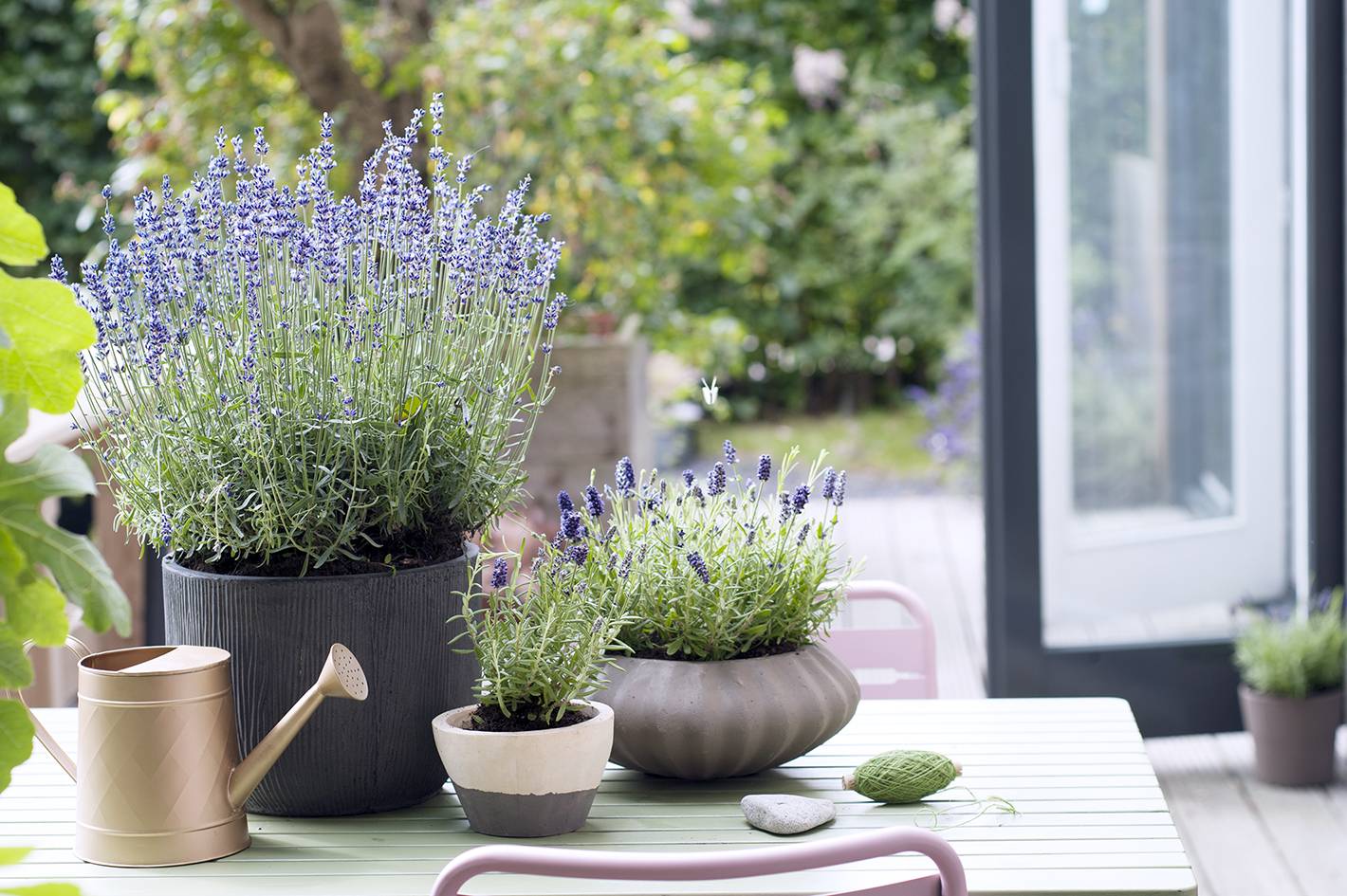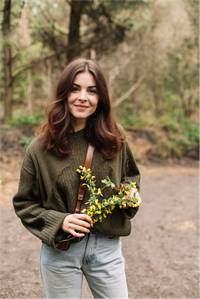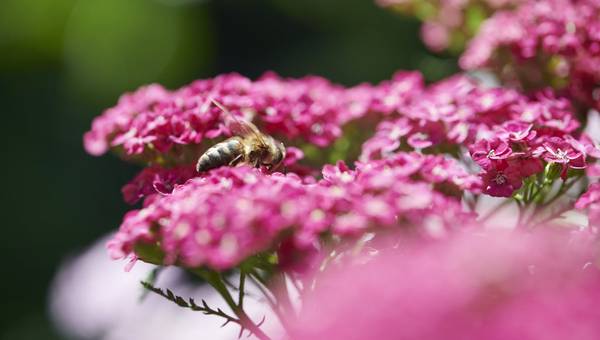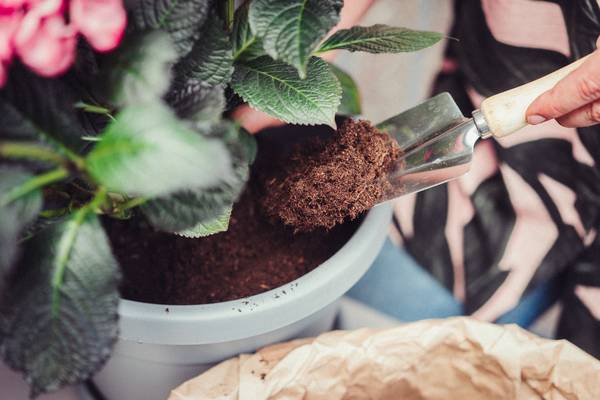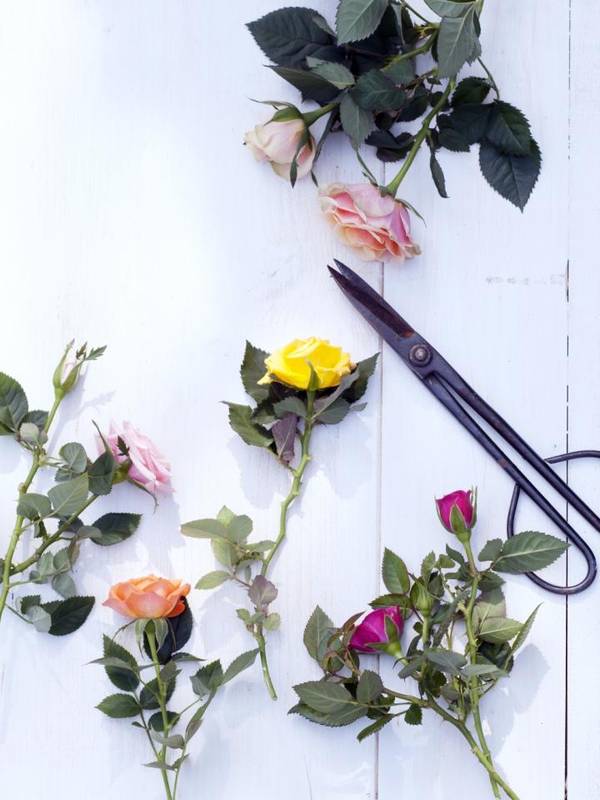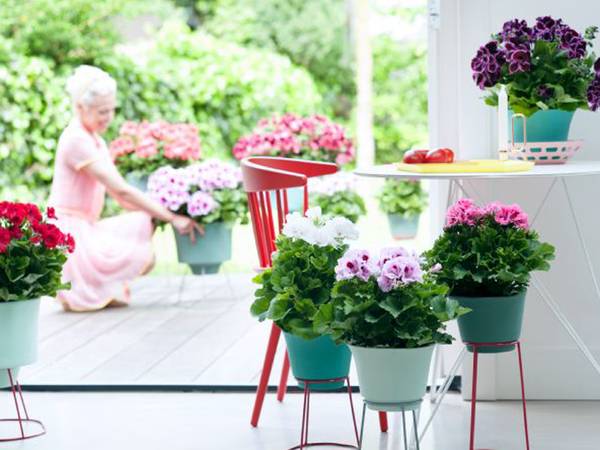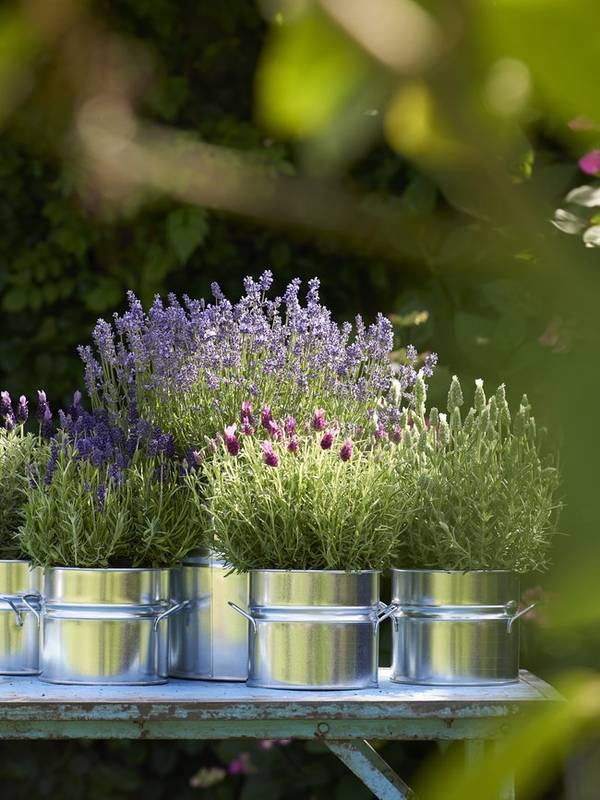

What does lavender look like?
Lavender is a Mediterranean plant which produces wonderfully fragrant flowers which bloom in summer, usually purple - or, indeed, lavender-coloured. The flowers can also be pink, white or blue in colour. Lavender is a shrub that typically grows around 50-75 centimetres high and 50 centimetres wide. It's characterised by its long stems and grey-green, narrow leaves that are evergreen and hardy. Lavender is a semi-shrub and is part of the Lamiaceae, or lipflower, family. This family also includes other aromatic plants such as thyme, sage and mint
What varieties of lavender are there?
Its pretty look, low-maintenance character, attraction to garden fauna and wonderful scent makes lavender is a very popular garden plant and familiar to many. Did you know, however, that there are around 30 different varieties? These are the three best-known varieties of lavender:
- Lavandula angustifolia: this is also called English lavender, or 'true' lavender. This variety is the hardiest, withstanding temperatures down to -15 degrees celsius, so well adapted even for our often chilly, damp and wintry country, and thus a good pick for our climate. There are many different cultivars within this species, such as 'Dwarf Blue' (with compact growth), Lavender 'Hidcote' (dark purple) and Lavender 'Munstead' (pale purple).
- Lavandula x intermedia: this species is also called Spanish lavender or Lavandin. This lavender has purple-blue flowers and is often used to make lavender oil. Spanish lavender, like the 'true' lavender above, is hardy, but this species grows taller than English and French lavender (up to about 80 centimetres tall). The leaves of this lavender variety are deeper grey-green, and bloom more loosely on longer stems.
- Lavandula stoechas: this species is also called French lavender, crested lavender or butterfly lavender. Lavandula stoechas has a strong scent, striking purple flowers and can be recognised by the lilac-purple crest on top of the flower spike. French lavender is less hardy than other varieties, so in our climate this species is mainly grown in pots. Planted on British soil in open ground, this lavender usually doesn't thrive as it should.
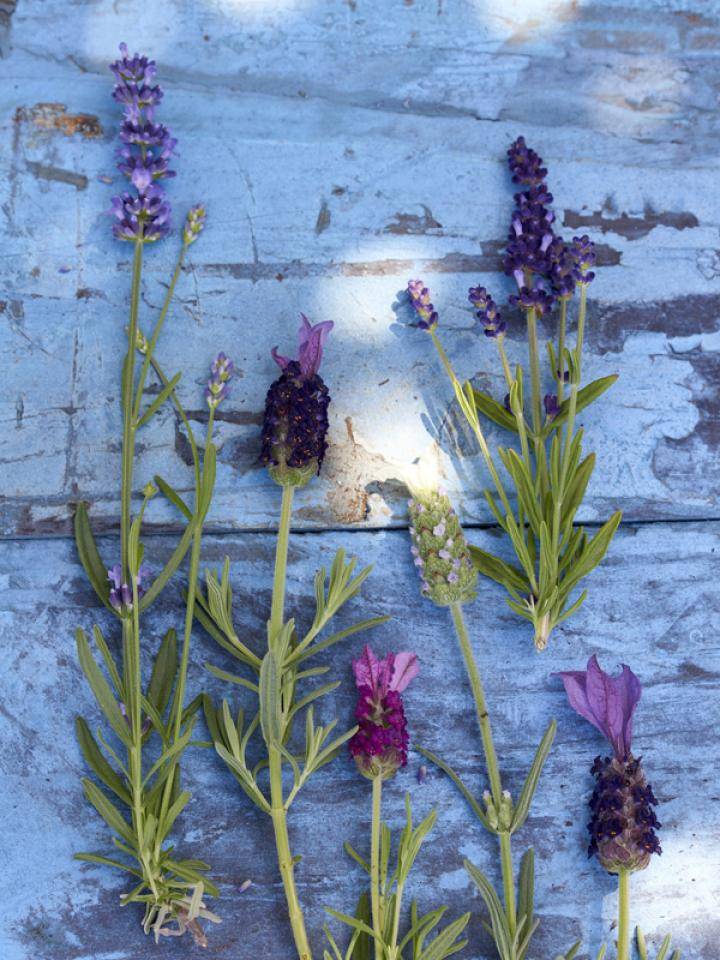
When to plant lavender?
Do you want to plant lavender in your garden, or in pots? You can essentially plant lavender all year round, provided it's not freezing and the ground isn't frozen. When the soil is warm (from around April to September), planting lavender is likely to be most successful. The best time to plant lavender is spring, after the frost and after the weather warms up. The lavender plants will then have enough time to take root, allowing you to enjoy the established plant as early as summer. If you plant lavender during summer, when it is warmer and drier, make sure the plant gets enough water. In autumn, the soil is usually moist enough and lavender needs less manual watering. If you plant lavender in the autumn, you will need some patience, but will enjoy beautifully flowering lavender the following year.
When does lavender flower?
Lavender is a summer bloomer. It usually blooms from June to September, with the peak flowering period reached in July. The exact flowering period of lavender depends on the variety and the climate.
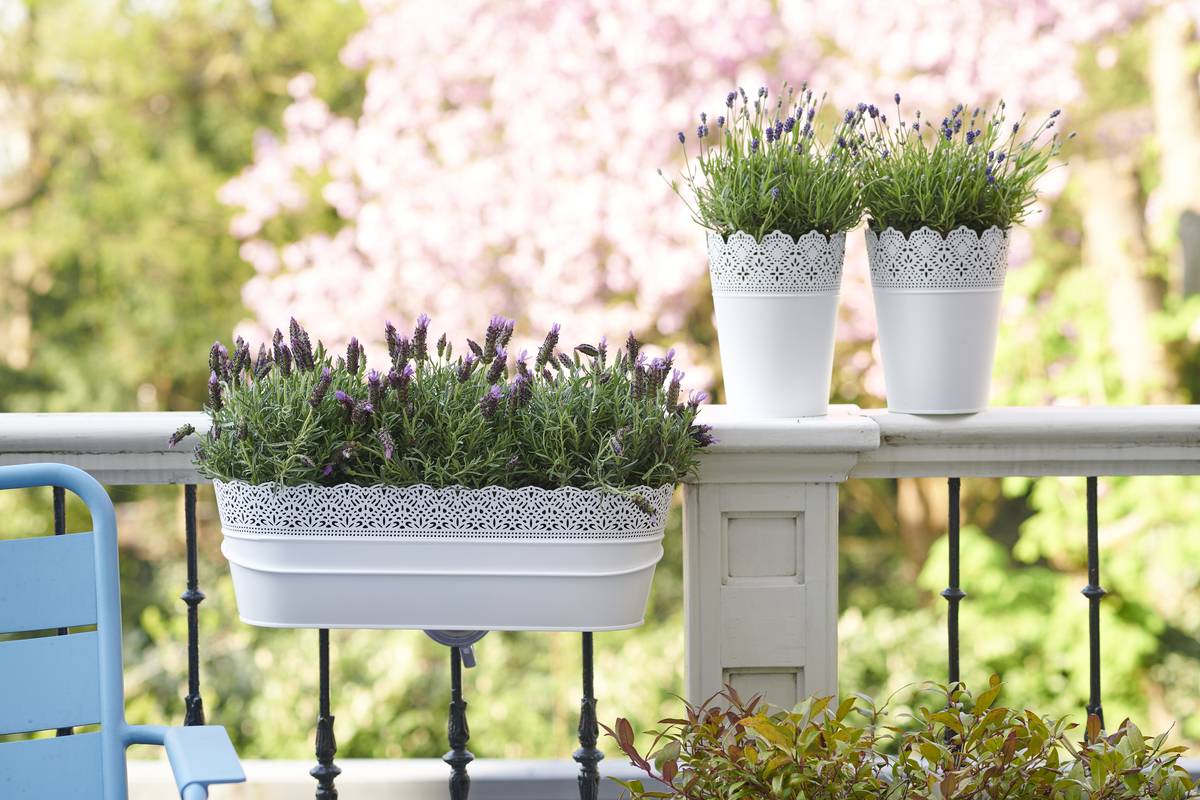
Should you prune lavender?
Yes. Lavender, including young lavender plants, is best pruned twice a year: once in spring (March/April) and once in late summer (August/September), when lavender has generally finished flowering. Don't wait too long to prune, or the plant will stop sprouting. Pruning lavender regularly keeps the plant nice and bushy.
- Lavender pruning in spring (main pruning): after nighttime frosts have finished and the weather begins to warm, give lavender its first pruning of the year. Prune the lavender plant back as deeply as possible, but above a new shoot or offshoot. Do not prune into the wood!
- Lavender pruning in August or September (shape pruning): when your lavender has finished flowering, cut off the spent stems and prune it into shape so that it can go into winter as a nice little compact, happy plant. Don't prune terribly rigorously - save that for spring. Butterfly lavender (also called crested lavender or lavendula stoechas) requires pruning earlier than the more classic lavender, as this species blooms earlier and flowers earlier.
Stekken
How to encourage more butterflies and bees into your garden
Lavender is not only popular with people, it's also a favourite plant of bees, butterflies and other pollinators. Lavender contributes to biodiversity and is in the top ten plants most attractive to butterflies. Combine lavender with other butterfly magnets such as ironwort (Verbena) and butterfly bush (Buddleja) and your garden will be a brightly-coloured buzzing party. Here's why the lavender plant is a favourite of butterflies, bees and bumblebees:
- Lavender produces lots of nectar, which is an important food source for bees, butterflies and bumblebees.
- The lavender flowers have a distinctive colour and characteristic scent that attract pollinators.
- Lavender blooms for a long time, so the plant provides food for pollinators for a long period of time.
- Lavender's dense flower clusters and compact growth habit make it easy for friendly bugs to land on the flowers and move from flower to flower while collecting nectar.
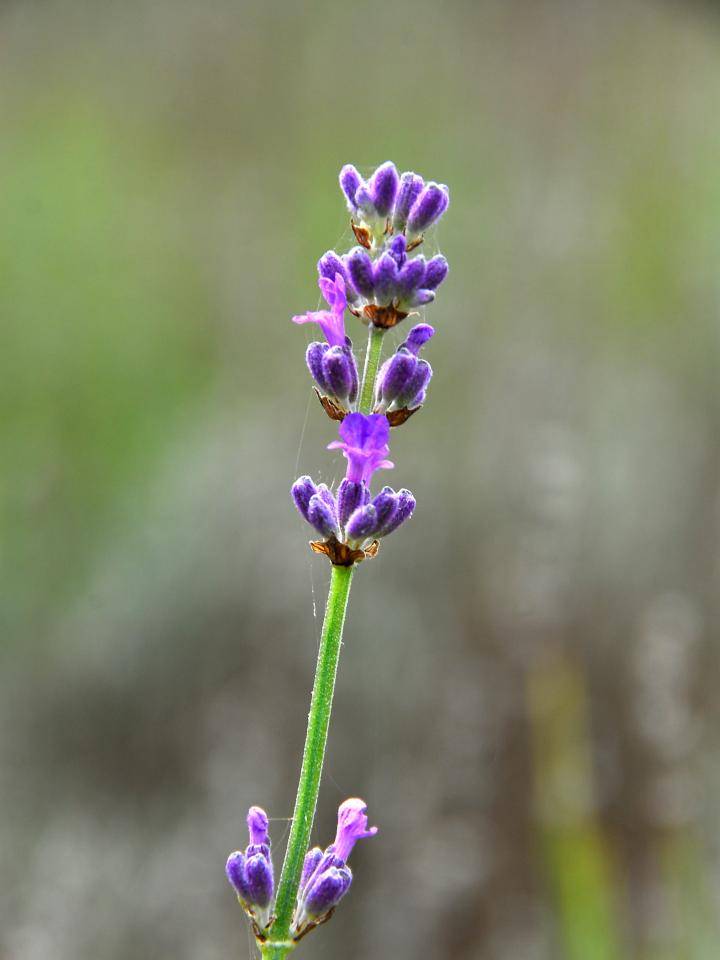
Uses and origins of lavender
Lavender, or Lavandula, is native to the Mediterranean region. Lavender is a low, highly branched shrub that originally grew on dry, rocky, calcareous slopes.
The scientific word Lavandula comes from the word lavare, meaning 'wash'. The plant got this name because of the use of lavender in ancient Roman baths. There, lavender was used to combat unpleasant odours and promote relaxation. Lavender and lavender oil have been in use for thousands of years because of their aromatic, calming and medicinal properties.
Today, lavender is a popular plant in gardens around the world. It's used for many different purposes, such as in aromatherapy, as an ingredient in soap and perfume and for culinary uses.
